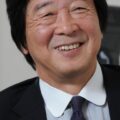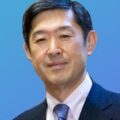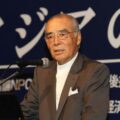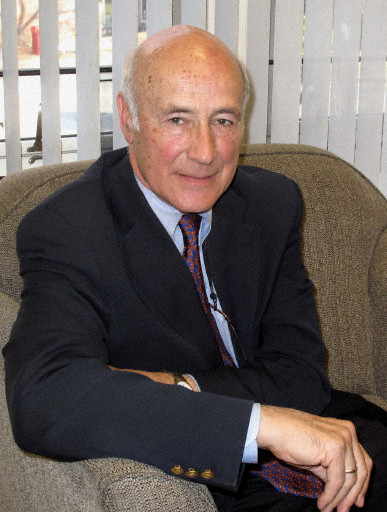(ASIA PIVOT) International Order in the "Pacific Century"
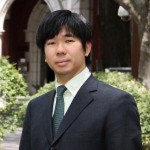
Hosoya Yuichi
“Atlantic Century” to “Pacific Century”
The world order is undergoing a massive, earth-shaking transformation: the center of global politics is shifting from the Atlantic Ocean to the Pacific Ocean. With a new international environment in the making, we must significantly adjust the paradigm of how we view the world. Otherwise, we will run the danger of misreading future developments in international politics.
Until the “Age of Exploration” began, the Mediterranean Sea used to be the center of world politics. Upon the discovery of the New World, European monarchs gradually focused their interests on the other side of the Atlantic, while at the same time being fearful of the threat from the Ottoman Empire that dominated the eastern Mediterranean.
Toward the end of the 18th century, political changes took place on both sides of the Atlantic in North America and France as “trans-Atlantic revolutions” – namely the French Revolution and the American War of Independence. These led to the spread of political ideals such as liberalism and democracy in the trans-Atlantic region.
Moreover, industrial revolution and the launch of regular liner routes helped promote unification of the region as one market. With the development of political modernization and economic industrialization, Western countries used their overwhelming economic strength and military power as leverage and expanded their influence across the entire world through colonization.
Meanwhile, once the power of the Ottoman dynasty as an Islamic empire had weakened rapidly after the Crimean War in the mid-19th century, major European powers began to extend their attention eastward, heralding the rising importance of the Qing Empire and Japan in the Far East. At this time, the Pacific Ocean was far from the world’s center and was merely on the periphery of international politics, which revolved around the Atlantic. Nonetheless, the invention and spread of steamboats and railways, as well as telegraphic communication, gradually brought the Pacific community into the international system.
The 20th century became the “American Century” (in the words of Henry Luce) with the importance of the Atlantic being further enhanced. In attending the Paris Peace Conference following the end of World War I, U.S. President Woodrow Wilson became the first U.S. president to cross the Atlantic and set foot in the Old World.
During World War II, the United States deployed a large number of military forces on the European continent. In August 1941, U.S. President Franklin Roosevelt and British Prime Minister Winston Churchill declared an ideology – the Atlantic Charter – that would later become the basis of postwar visions.
Then in the Cold War era, the two superpowers – the United States and the Soviet Union – were locked in confrontation other across the Atlantic. By April 1949, the North Atlantic Treaty Organization was established. The 20th century was, so to speak, an Atlantic Century that centered on the trans-Atlantic world comprising the United States and Europe.
East Asia was nothing more than the “Far East” as seen from the Atlantic, and where the United States in particular experienced gruesome battles against Communist forces in the Korean War and Vietnam War. The Pacific Ocean was by no means a “pacific” ocean in the 20th century. Asia, in the latter half of the 20th century, suffered from a great deal of disorder and stagnation brought about by wars and revolutions.
It is true that around the start of the 20th century, the U.S. government had already gradually come to realize the importance of the Pacific. U.S. President Theodore Roosevelt noted back in 1903, “The Atlantic Era is now at the height of its development and must soon exhaust the resources at its command. The Pacific Era, destined to be the greatest of all, is just at its dawn.”
However, in his time, European powers were still expanding their colonial rule around the world. Asia was no exception. The Qing Empire, having lost in the Sino-Japanese War, was headed toward collapse, while a large part of Southeast Asia too was under the colonial rule of Britain and France. The centers of prosperity and glory were London, Paris and Berlin, not cities along the Pacific coast.
That international order is now changing dramatically.
Nowadays, the world’s three largest economies – the United States, China and Japan – are all nations surrounding the Pacific Ocean. Around the world people closely observe the cooperation and confrontation between the United States and China, and worry about the impact from frictions between Japan and China over territorial and historical issues.
That said, the possibility of a total war being waged among these major powers in the Pacific has been significantly reduced. The United States and Asian nations, as well as Australia and others, are engaged in an immense amount of trade across the Pacific every day, striving to achieve increased prosperity. The Pacific is becoming a sea of prosperity and a sea of peace. The Pacific coastal cities of Shanghai, Hong Kong, Singapore, Tokyo, and Los Angeles now drive the world economy.
This is a huge transformation from the viewpoint of the history of civilization. This momentous change also has a great deal to do with the election of Barack Obama as U.S. president. As the new president, with a completely different background from that of his predecessors, took office, the wheels of history began clanking into action.
“First Pacific President”
In a speech delivered at Suntory Hall in Tokyo on Nov. 14, 2009 during a visit to Japan, President Obama made the following remark: “The United States of America may have started as a series of ports and cities along the Atlantic Ocean, but for generations we have also been a nation of the Pacific. Asia and the United States are not separated by this great ocean; we are bound by it.” He also said, “My own life is a part of that story. I am an American president who was born in Hawaii and lived in Indonesia as a boy…So the Pacific Rim has helped shape my view of the world.” He concluded his speech by saying, “And there must be no doubt: as America’s first Pacific president, I promise you that this Pacific nation will strengthen and sustain our leadership in this vitally important part of the world.”
President Obama declared himself “America’s first Pacific president.” This is obvious when considering the differences in upbringing between him and his predecessor George W. Bush.
Bush was an Anglo-Saxon president born in New Haven, Connecticut, on the Atlantic coast, the elder son of the distinguished Bush family. He went to high school in Massachusetts and then to Yale University in New Haven, followed by Harvard Business School for an MBA. All these cities faced the east coast on the Atlantic.
Traveling between the state of Texas in the Gulf of Mexico and the states on the eastern seaboard, Bush grew up in an elite world on the Atlantic coast. He devoted himself to spreading the Western world’s values of democracy and freedom, and built a close relationship of trust with British Prime Minister Tony Blair across the Atlantic.
In that sense, one could call him the “Atlantic president.” His interpretation of the world differs substantially from that of the “Pacific president” Obama.
Obama was brought up in the Pacific environments of Hawaii, Indonesia and California, before moving later to New York to attend Columbia University and Cambridge for Harvard University. Among his childhood friends were Asians he met in Hawaii, including Japanese, and Muslims he met in Indonesia.
Compared with President Bush, who emphasized Christian values and fought a “war against terror” in order to safeguard the Western world’s principles, Obama has a different perspective of the world, and when he became president U.S. foreign policy naturally shifted its attention toward the Pacific.
Regarding the importance of the Pacific region, President Obama told the Australian parliament in Canberra on Nov. 17, 2011, “The United States has been, and always will be, a Pacific nation.” Furthermore, around the same time, Hillary Clinton published an article titled “America’s Pacific Century” in Foreign Policy, emphasizing the deep U.S. ties with the region.
Both Obama and Clinton positioned the Pacific region as the linchpin of U.S. foreign policy. As the world’s largest major power and the Asia-Pacific region, where dynamic economic growth continues, bond, the 21st century is about to become, just as Clinton said, a “Pacific Century.”
Japan-U.S.-China Relations as Core of World Politics
With the center of international politics now shifting from the Atlantic to the Pacific, what kinds of change are to be expected from now on? With China rapidly building up its military power and intensifying its blue-water presence in the East China Sea as well as the South China Sea, how should the United States and Japan respond?
China’s economic trends have a direct and significant impact on the world economy. Moreover, Sino-U.S. relations have now become arguably the most important in the world.
On the other hand, when the Japan-U.S. alliance was seriously shaken under Japanese Prime Minister Yukio Hatoyama’s administration, concerns were raised even in Seoul, Singapore, Hanoi and other places. The trilateral relationship between the United States, China and Japan, as well as their respective bilateral ties, now have a direct bearing on the course of the world order.
This is significantly different from the international political situation of a century ago when the fate of world politics was in the hands of such European powers as Britain, France and Germany.
Where then are relations between Japan, the United States and China headed and how will they influence global politics? When considering these relations, one should bear in mind two frameworks. The first is aimed at strengthening cooperation among the three powers, and the second is to reinforce the Japan-U.S. alliance to counter the rise of China.
Amid this political shift to the Pacific, the global power balance will also be transformed significantly depending on the kind of relationship that the United States and China build with each other. So there has been much attention focused on how the Obama-led Democrat administration, established in January 2009, would handle its ties with China.
In its early days, the Obama administration initially sought to secure regional stability and rebuild the U.S. economy in the aftermath of the “Lehman Shock” by stepping up its partnership with China. Whether it be reshaping the global economy or forming a new accord on climate change or bolstering the international nuclear nonproliferation regime, it will be difficult to realize any of these without cooperation between the United States and China.
Such a trend has been consistent ever since U.S. Deputy Secretary of State Robert Zoellick voiced in 2005 the notion of China as a “responsible stakeholder.” Instead of simply seeing China as a “strategic competitor” from the viewpoint of the balance of power, it was a policy aimed at encouraging China to act like a responsible power in the international community.
Under the Obama administration, Deputy Secretary of State James Steinberg used the phrase “strategic reassurance” in a speech on Sept. 24, 2009, pointing to the need for the United States to exercise its influence over the direction of China’s development. Hillary Clinton visited China in February 2009, the month after she became secretary of state, and demonstrated the new administration’s emphasis on its relations with China.
Furthermore, President Obama’s visit to China in November that year was the highlight of his administration’s policy of prioritizing relations with China. While adhering to the Bush administration’s line of emphasizing U.S.-China relations, Obama went further and developed even more comprehensive consultations with China by launching the U.S.-China Strategic and Economic Dialogue (S&ED).
From 2009 through 2010, while Japan-U.S. ties were somewhat shaken under the newly established administration of the Democratic Party of Japan (DPJ) led by Hatoyama, U.S.-China relations became all the more intimate and important.
In the United States, although there have been experts advocating the “G2” theory under which the United States and China should jointly manage the problems of the world, such calls for U.S.-China cooperation gradually receded from around 2009 and 2010. In 2009, Elizabeth Economy and Adam Segal published the article “G2 Mirage” in Foreign Affairs, severely criticizing the Obama administration’s foreign policy for being overly dependent on U.S.-China cooperation.
There are various reasons behind the ebbing of optimism over U.S.-China cooperation. Above all, China’s foreign policy changed course around this time to adopt a more hard-line stance over its “core interests.” This was something unforeseen even for the Obama administration.
The People’s Liberation Army rapidly built up its naval power and began to include (where it claims) disputed territories in the South China Sea and East China Sea as part of such “core interests.”
In March 2009, five Chinese naval vessels surrounded two U.S. Navy ocean surveillance ships operating near Hainan Island and maneuvered in abnormally close quarters of as little as 10 meters. The incident showed how China, in order to establish its own sphere of influence, will attempt to eliminate the U.S. Navy’s influence from its nearby seas.
Moreover, the U.S. Defense Department’s Quadrennial Defense Review published in February 2010 expressed caution about the fact that China is gaining “anti-access/area denial (A2/AD)” capability to block the U.S. military from approaching specific areas of the western Pacific. Although it remains unchanged that relations with China are essential, the United States has gradually become more aware of the need to deal with China’s blue-water presence.
Since 2010, the U.S. government has been adopting a stronger posture toward China’s blue-water presence as it became increasingly aware of the limitations of U.S.-China cooperation. At the ASEAN Regional Forum foreign ministerial meeting in July 2010, Clinton criticized China’s high-handed approach in dealing with territorial rows in the South China Sea.
Meanwhile, Naoto Kan, who had become the new Japanese prime minister, sought to put an end to the turbulence in Japan-U.S. relations over the Futenma base issue by adopting the existing Henoko relocation plan as government policy and also began to work toward reinforcing bilateral ties. In addition, the new National Defense Program Outline approved by the Cabinet in December that year laid out more active roles for the Self-Defense Forces by introducing the notion of “dynamic defense capability” and boosting southwestern patrol and surveillance activities.
Seiji Maehara, who became foreign minister in September 2010, built a relationship of trust with Clinton by holding foreign ministerial talks on numerous occasions and repaired the rather dented Japan-U.S. alliance under the Hatoyama administration. “Operation Tomodachi” in the aftermath of the Great East Japan Earthquake of March 11, 2011, demonstrated to the world the capabilities Japan and the United States have to implement joint action at the operational level.
As can be seen from all this, relations between Japan, the United States and China have shifted considerably over the past five years or so.
At the beginning, the Obama administration had tried to achieve a relationship of cooperation with China based on the theory of “strategic reassurance” in dealing with China’s rapid military buildup. The Hatoyama administration had held out hope of developing cooperative ties under the “East Asian Community” concept. However, as relations with China deteriorated over its vigorous blue-water presence, its crackdown on Tibet and a dispute over the Nobel peace prize, these eventually turned back to the balance-of-power approach.
Is a Liberal International Order Feasible in the Pacific?
As the 21st century proceeds, a large number of grave security concerns remain in the Pacific, with the center of world politics shifting toward the region from the Atlantic, many of them brought about by the rapid rise of China.
In the trans-Atlantic region, the United States, Canada and the European nations have in common such values as democracy, freedom and human rights, and have developed alliances in the form of the North Atlantic Treaty based on such a foundation. Through the sharing of basic values, collective security, and multi-tiered economic ties, the trans-Atlantic region was able to establish a stable order.
Meanwhile in the trans-Pacific region, there are a number of bilateral alliances, such as the Japan-U.S. alliance and the U.S.-South Korea alliance, but no multilateral security mechanism comprising the major countries, including China. The ADMM-Plus (ASEAN Defense Ministers Meeting-Plus) involving ASEAN members as well as Japan, China, the United States and other countries began in 2010, but this has not yet reached the stage where it is institutionalized and capable of bringing about a stable order.
Furthermore, in this region where Communist regimes such as those in China, North Korea and Vietnam, as well as military dictatorships like that in Myanmar still exist, seeking to share common basic values is not easy. More often than not, conflicts over human rights and democratization develop into serious international confrontations. In addition, even the basic understanding of freedom of navigation is hampered by territorial tensions such as those in the East China Sea and South China Sea.
In other words, while the world order in the latter half of the 20th century has been stably maintained thanks to the existence of an international system in the Atlantic, the world order in the Pacific in the early 21st century is highlighted by an unstable balance of power, the absence of a multilateral security mechanism, confrontation over basic values, conflicts over maritime interests, territorial disputes, and so on.
Whether the Pacific Ocean will truly become a “pacific” ocean in this “Pacific Century” rests largely upon the policies and diplomacy of the three major powers – Japan, the United States and China. It will also depend on what kind of international order will be built in this region, centering on the initiatives of these three nations.
In the trans-Pacific region, the establishment of an international system has not seen adequate progress. Although in terms of economic cooperation frameworks such as the APEC (Asia-Pacific Economic Cooperation) forum have developed since the post-Cold War era, multilateral cooperation frameworks in the field of security in this region are not yet mature.
In June 2006, U.S. Secretary of Defense Donald Rumsfeld mentioned “Asia’s emerging security architecture” at the Shangri-La Dialogue in Singapore. Since then, research has been undertaken in this field and continues today. The Pacific Rim is now on the way to establishing a stable security architecture.
In a speech delivered at the Center for Strategic and International Studies (CSIS) in Washington D.C. on Jan. 6, 2011, Japanese Foreign Minister Seiji Maehara spoke of the need for Japan and the United States to join hands in creating a stable order in the Asia-Pacific region. “The top-priority task today for Japan and the United States, I believe, is to make all-out and all-round efforts to shape a new order in the Asia-Pacific region, which finds itself in the middle of a period of change…In view of the urgent need to develop institutional foundations in the region today, expectations are only rising that we play even greater roles, and I feel the responsibilities on our shoulders are very great.”
More specifically, Maehara listed the following three elements for this “new order” – “promoting various kinds of regional cooperation,” “creating a common platform for the liberalization of trade and investment” and “establishing closer partnerships among countries that are mature democracies with market economies, with a view to building a system of cooperation encompassing both security and economy.”
Indeed, the administrations of prime ministers Naoto Kan and Yoshihiko Noda came up with a diverse range of approaches to promote such fields as economic partnerships in the Asia-Pacific region based on the TPP (Trans-Pacific Partnership), broader Japan-U.S. defense cooperation under the new National Defense Program Outline, and a regional cooperative mechanism on maritime security. Japan and the United States have shown a certain level of cooperation toward building a liberal order based on values such as democracy, freedom of navigation, the rule of law and human rights.
In Japan and the United States, both academics in the field of international politics and people in circles involved in policy implementation have come to recognize the need to construct a new Asia-Pacific architecture that embraces a rising China.
Princeton University Professor G. John Ikenberry advocates establishing a liberal order in the Asia-Pacific region with the Japan-U.S. alliance at its core. In the face of China’s ascendancy, he also points to the importance for the Western world to integrate China into the postwar liberal order and notes it would be to the benefit of China as well as other countries.
This logic was also clearly spelt out in Clinton’s speech in Hawaii on Jan. 12, 2010, in which she said, “By now – almost a year into the new administration – it should be clear that the Asia-Pacific relationship is a priority of the United States” because “America’s future is linked to the future of the Asia-Pacific region; and the future of this region depends on America.”
In addition, the need for the United States to be even more deeply engaged in security in the Asia-Pacific region and demonstrate leadership in achieving its stability was emphasized in the new U.S. defense strategy announced on Jan. 5, 2012.
Where Is Japan Heading?
With the launch of Obama’s presidency in January 2009, relations with China gained an overwhelmingly larger presence in U.S. foreign policy. The most important bilateral relationship is no longer the one between the United States and Japan, but that between the United States and China. Moreover, the Japan-U.S. alliance drifted somewhat over the Futenma base relocation issue under the Hatoyama administration established in September that year.
However, by 2010 the Japanese and U.S. governments once again firmly realized the value of the Japan-U.S. alliance and it became necessary to adopt new policies toward China, which has begun to display an increasingly aggressive approach regarding its blue-water presence. To that end, instead of trying to contain China’s expansion based simply on the balance of power, the strategy is to usher China into the new Asia-Pacific architecture and aim for further economic prosperity and a more stable order that includes China.
As mentioned at the beginning, the 21st century is becoming a “Pacific Century” and the relationships between the world’s top three economic powers – the United States, China and Japan – now carry unparalleled importance. Japan must therefore recognize the changes in the global power balance and engage in more proactive politics and foreign policy in order to establish a new order that is inclusive of emerging nations. It cannot afford to be stuck in political paralysis.
In the face of China’s rapid rise, Japan finds itself dwelling cynically on “the two lost decades” and pessimistically on its own decline. Yet, by chance, Japan has leaped onto the center stage of world politics in this “Pacific Century.”
During the “Atlantic Century” Japan had long been placed on the periphery in the “Far East” and settled for the status of an onlooker in many important international political issues. From now on things will no longer work that way.
Significant political clout must be exercised to get the most out of limited resources, and a more assertive foreign policy is needed to secure Japan’s national interests and ensure its security. To achieve this, Japan must first pay attention to this huge transformation in global politics and fully comprehend which way the wind is blowing.
==============================================
Translation of an article based on “Toward the Pacific Century” in Asteion, Vol. 76, pages 51-62, May 2012 (Suntory Foundation, Asteion Editorial Committee, Hankyu Communications Co.) after revisions and amendments made by the author in January 2013.
Born in 1971, Yuichi Hosoya graduated from the Rikkyo University College of Law and Politics in 1994, completed his master’s degree (international relations) at the University of Birmingham in 1996, then completed his doctoral degree at the Keio University Graduate School of Law in 2000. Before assuming the post of professor at the Keio University Faculty of Law in 2011, Hosoya has served as a full-time lecturer at the Hokkaido University School of Law, a full-time lecturer at the Keiai University Faculty of International Studies, a full-time lecturer and later an associate professor at the Keio University Faculty of Law, a visiting fellow (Fulbright program) at Princeton University, and a visiting professor (Japan Chair) at Institut d’Etudes Politiques de Paris (Sciences Po). Hosoya became a senior fellow at the Institute for International Policy Studies in September 2010. He authored a number of books including Sengo kokusai chitsujo to Igirisu gaikō (The Postwar International Order and British Diplomacy), published by Sobunsha, which won the Suntory Prize for Social Sciences and Humanities), and Rinriteki na senso (Ethical Wars) published by Keio University Press Inc., which won the Yomiuri-Yoshino Sakuzō Prize)
